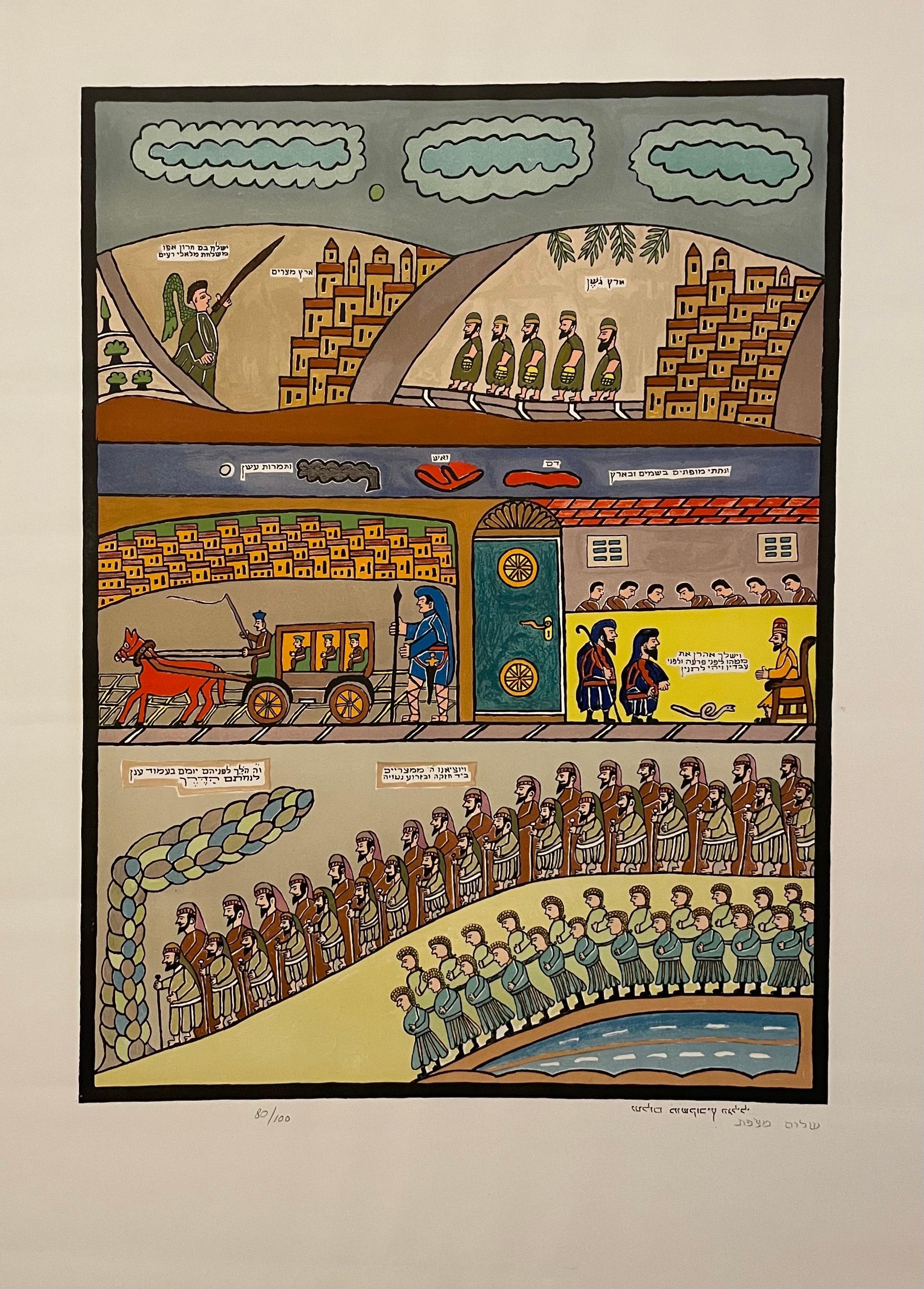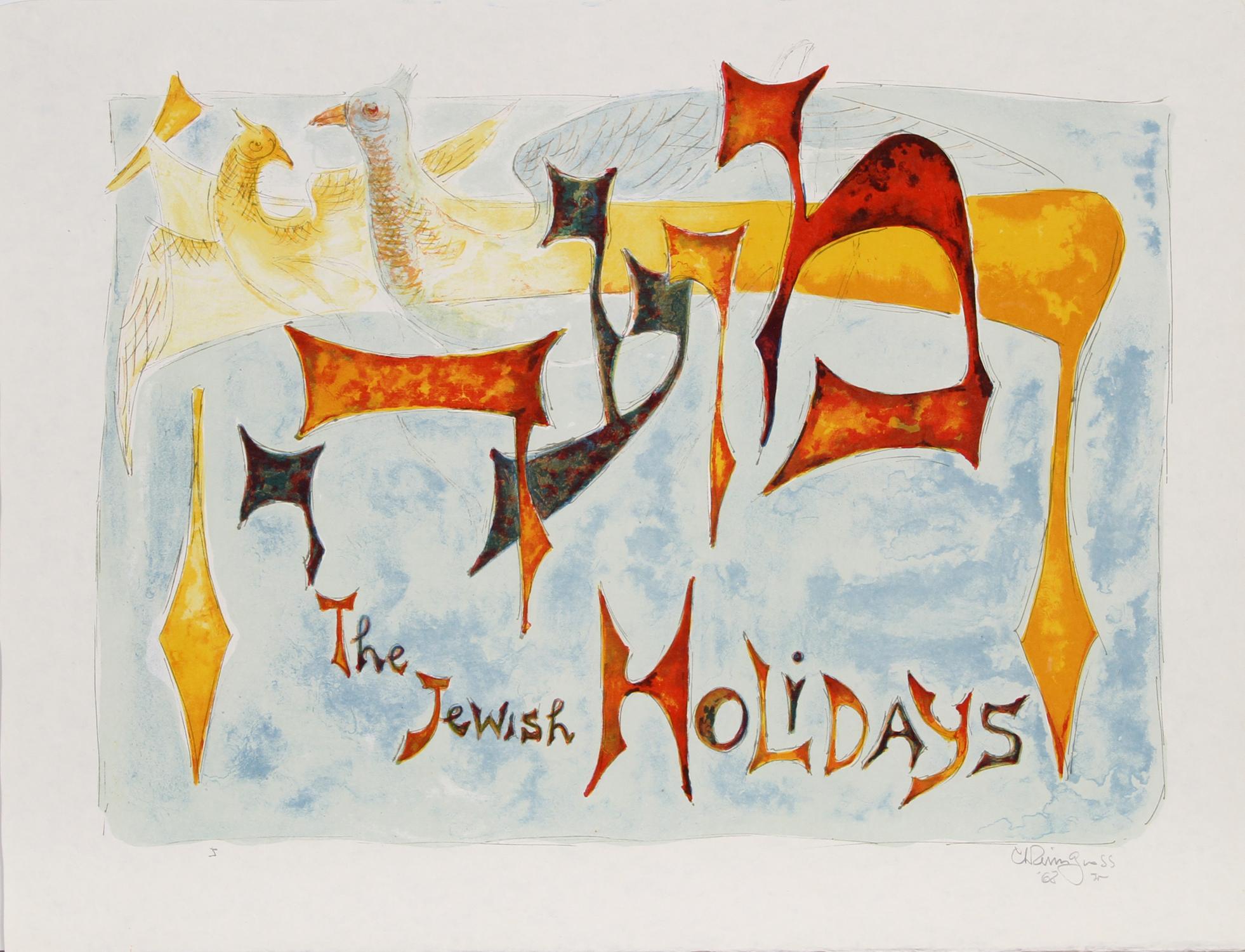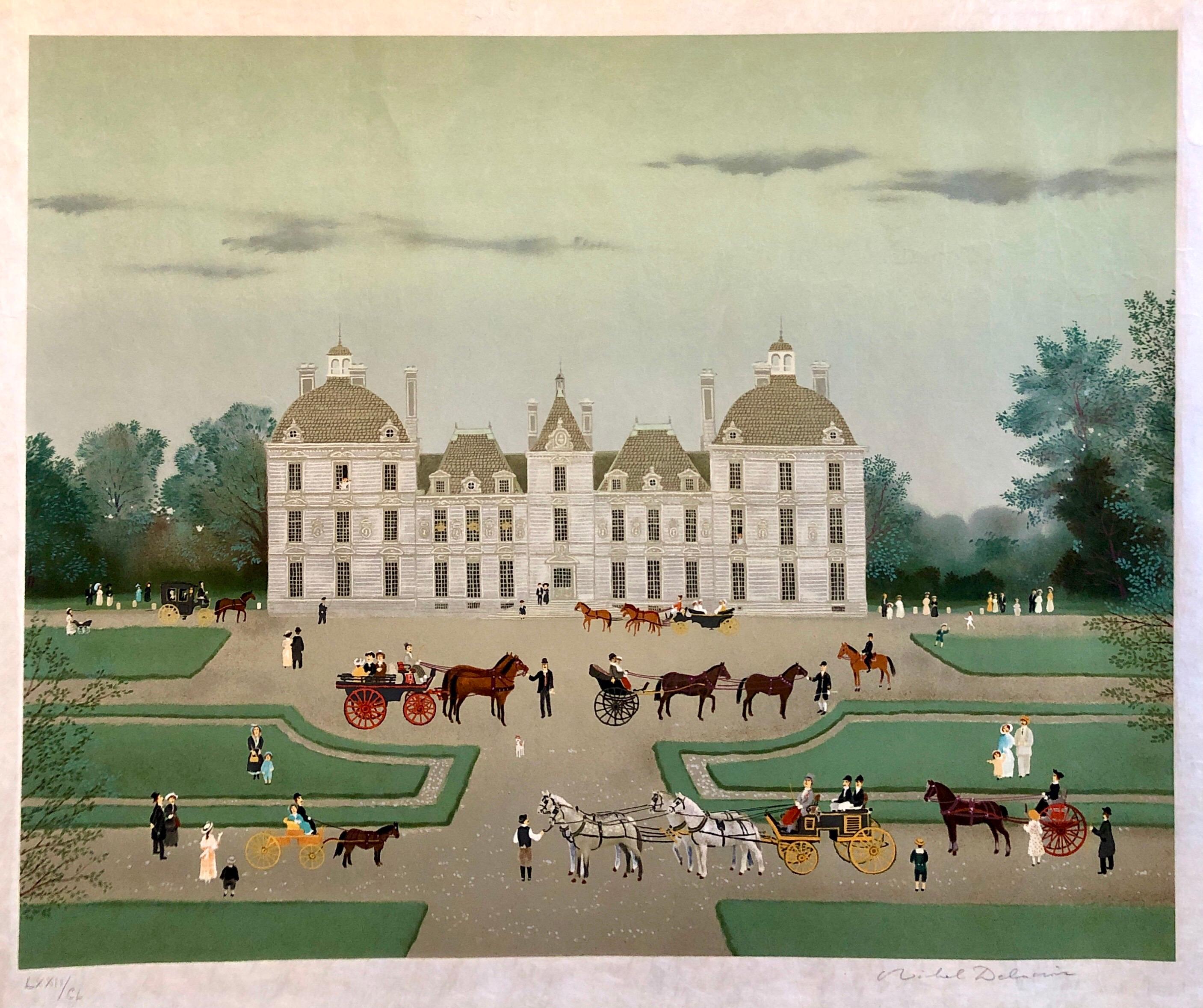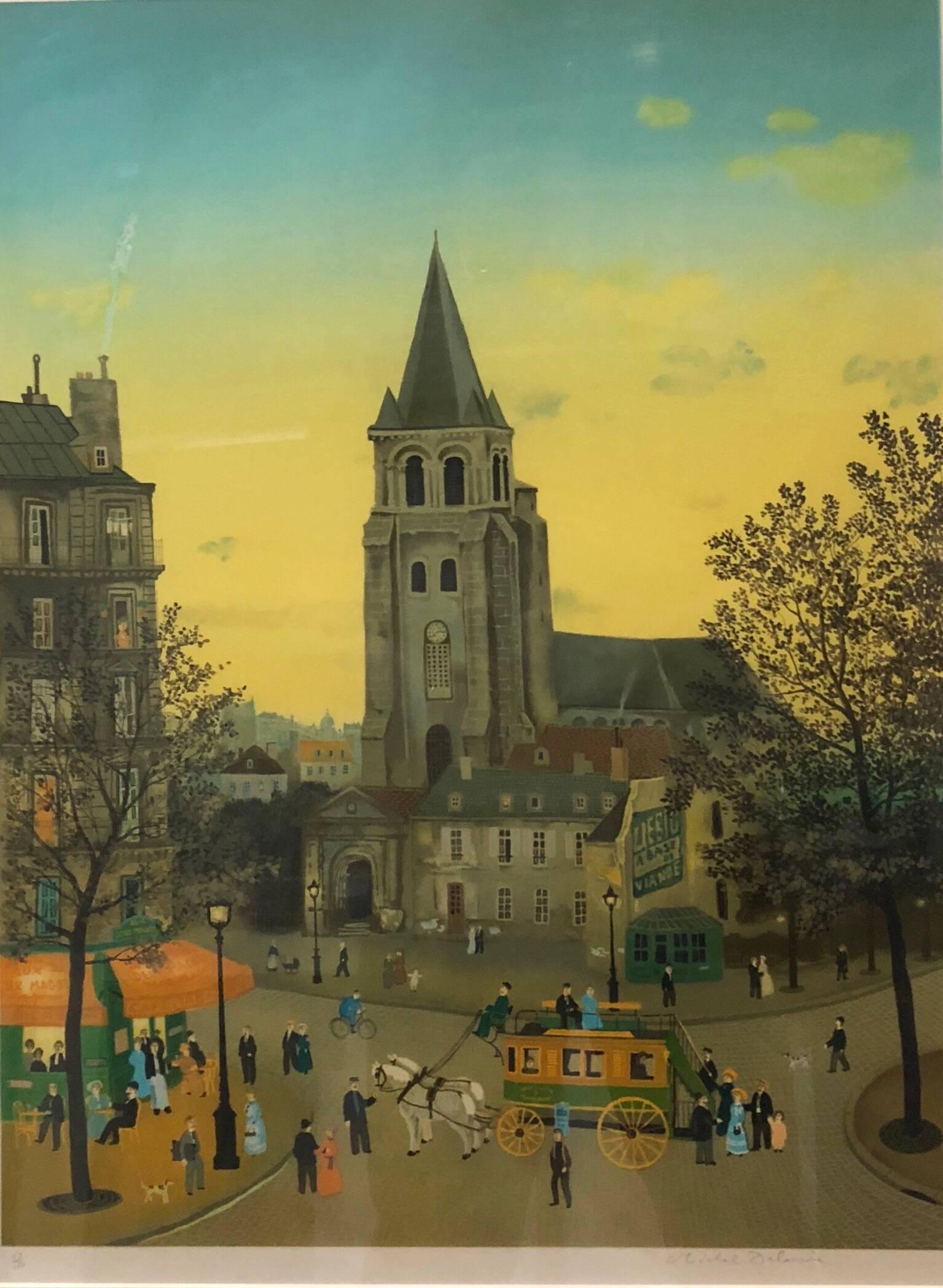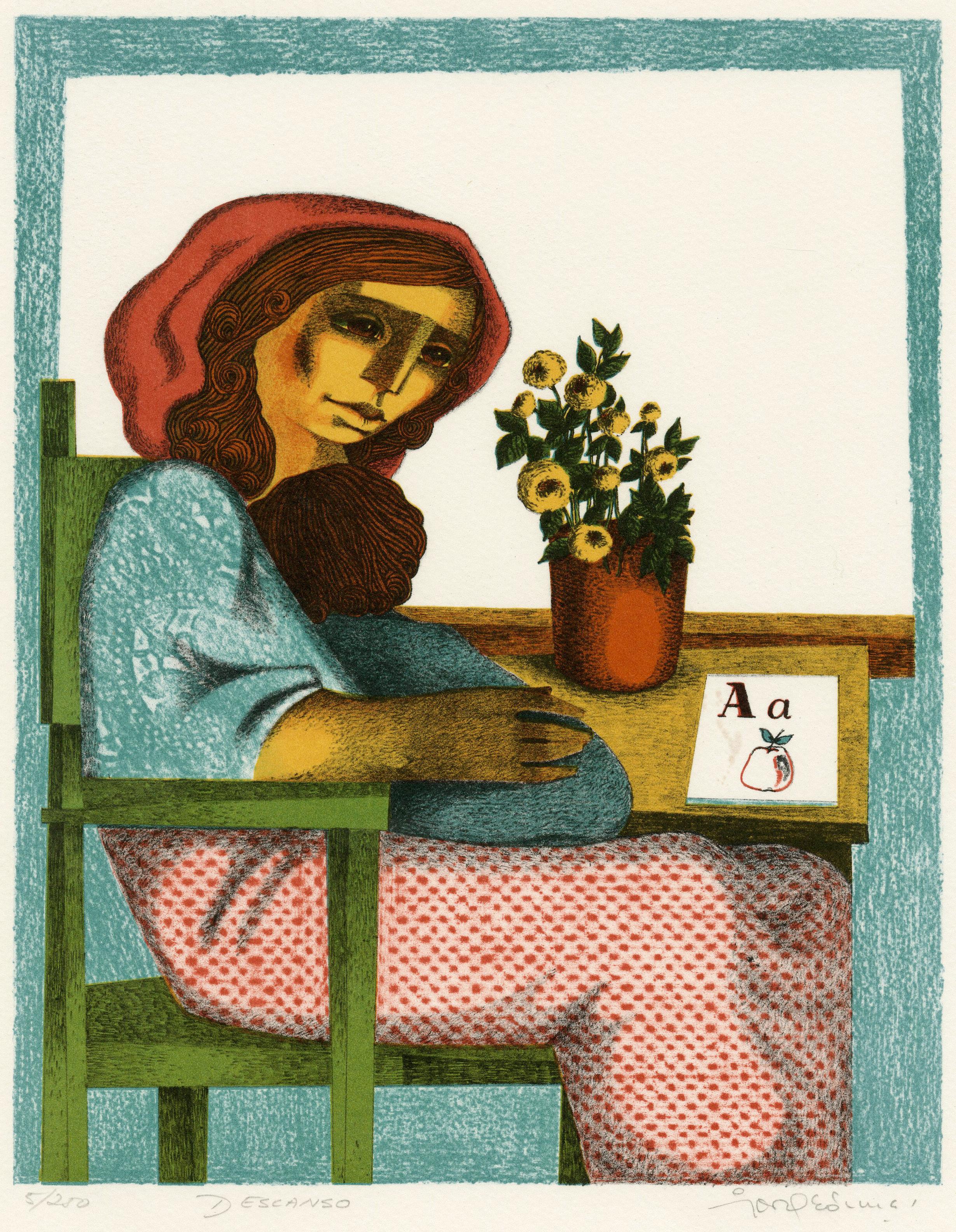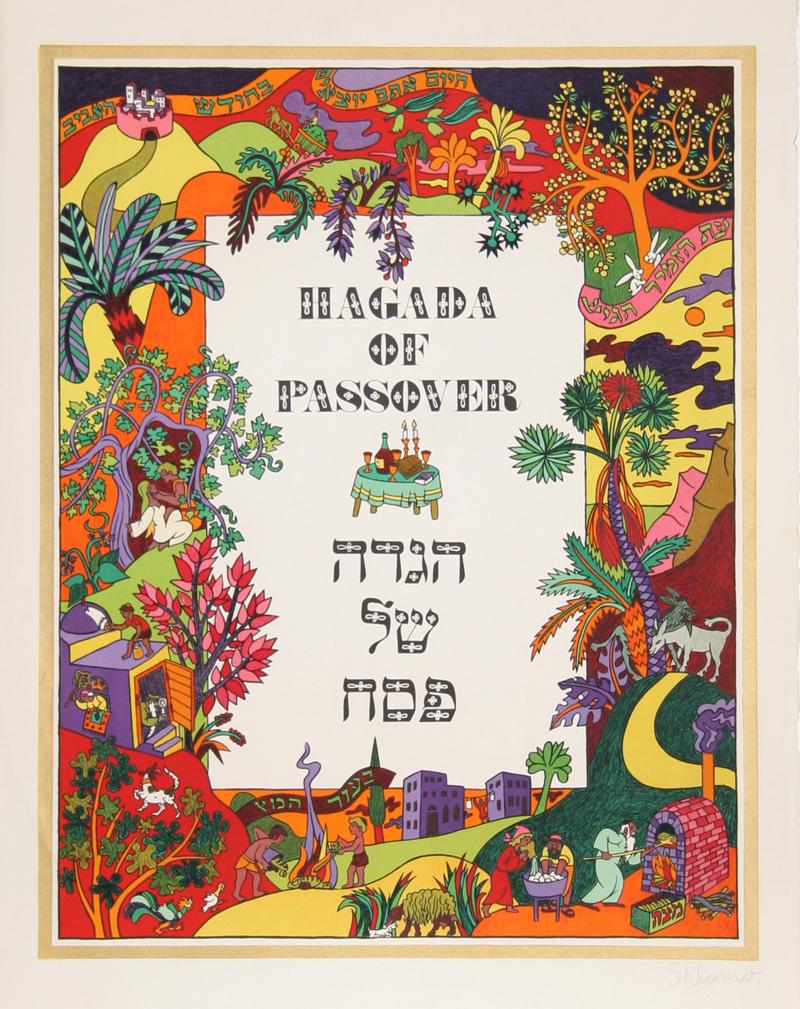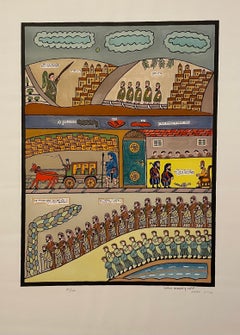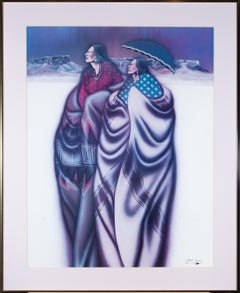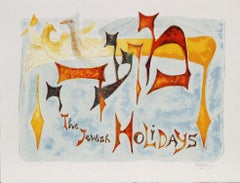
Hand signed Folk Art Naive lithograph on Arches Paper Paris Snowman Scene
View Similar Items
Want more images or videos?
Request additional images or videos from the seller
1 of 11
Michel DelacroixHand signed Folk Art Naive lithograph on Arches Paper Paris Snowman Scene
About the Item
- Creator:Michel Delacroix (1933, French)
- Dimensions:Height: 28.75 in (73.03 cm)Width: 22.75 in (57.79 cm)
- Medium:
- Movement & Style:
- Period:
- Condition:minor wear to frame.
- Gallery Location:Surfside, FL
- Reference Number:1stDibs: LU3822639241
About the Seller
4.9
Platinum Seller
These expertly vetted sellers are 1stDibs' most experienced sellers and are rated highest by our customers.
Established in 1995
1stDibs seller since 2014
1,541 sales on 1stDibs
Typical response time: 1 hour
More From This SellerView All
- Israeli Folk Art Hebrew Naive Judaica Bible Exodus Lithograph Shalom of SafedBy Shalom MoskovitzLocated in Surfside, FLVintage pencil signed and numbered limited edition lithograph on deckle edged Arches paper. Shalom of Sefad (Shulem der Zeigermacher in Yiddish Shalom Moskowitz) Shalom of Tzfat lived for over seventeen years in his native town of Safed in the hills of the Galilee. There he worked as a watchmaker, stonemason and silversmith, during the 50's. Since then this self-taught artist has achieved an international reputation. Shalom is a naive painter, but not a primitive one, he expresses a very elaborate way of thinking in his own way. While belonging to Hasidism, Shalom of Safed...Category
20th Century Folk Art Figurative Prints
MaterialsLithograph
- Israeli Folk Art Hebrew Naive Judaica Lithograph Jewish Holiday ShavuotBy Shalom MoskovitzLocated in Surfside, FLVintage pencil signed and numbered limited edition lithograph on deckle edged Arches paper. Shalom of Sefad (Shulem der Zeigermacher in Yiddish Shalom Moskowitz) Shalom of Tzfat liv...Category
20th Century Folk Art Figurative Prints
MaterialsLithograph
- Hand signed Folk Art Naive lithograph on Japon Paper Paris French Country SceneBy Michel DelacroixLocated in Surfside, FLChâteau de Cheverny in the Loire Valley of France Lithograph in colors depicting an enchanted evening at Cheverny with a horse drawn wagon and carriages on a winter day, Signed in...Category
20th Century Folk Art Figurative Prints
MaterialsLithograph
- Hand signed Folk Art Naive lithograph on Arches paper Paris Evening Cafe SceneBy Michel DelacroixLocated in Surfside, FLsize includes frame: 32.5" H x 26.5" W; Lithograph in colors depicting an enchanted evening in Paris with a bright cafe and a church or public building on a charming Paris square. ...Category
20th Century Folk Art Figurative Prints
MaterialsLithograph
- Naive Lithograph Paris Train Station Wedding Party, Honeymoon Scene Folk ArtLocated in Surfside, FLHand signed, limited edition on BFK Rives French art paper. I believe the title is Honeymoon. Jan Balet (20 July 1913 in Bremen – 31 January 2009 in Estavayer le Lac, Switzerland), was a German/US-American painter, graphic artist and illustrator. Affected by the folk art style of naive art he worked particularly as a graphic artist and as an Illustrator of children's books. His works exhibit a dry wit and refreshingly candid, whimsical, satirical view of life. His uncle was the famous painter and illustrator Benno Eggert. Many well-known personalities of the time were friends of his grandfather, i.e. the painters Hans Purrmann, Karl Caspar, Maria Caspar-Filser (cousin of his mother), the writer Martin Andersen Nexo, the Swabian poet Wilhelm Schussen as well as the poet and writer Oskar Wöhrle. In 1929, at the age of 17, he moved to Berlin at the invitation of his father and studied Drawing at the college of Arts and Crafts (Kunstgewerbeschule Ost am Schlesischen Bahnhof). A year later, he went to live with his mother and his grandmother, in Munich. Balet transferred his studies to the Munich College of Arts but was dismissed in 1932. He went on to study with Professor Ege, at a private school for commercial art. During this time he also worked at an institute for lithography and for the art gallery Wallach. Balet rented his first small studio at the age of nineteen, where he manufactured and sold hand colored Bavarian woodcuts. 1934 he passed the entrance examination to the Akademie der Bildenden Künste München and undertook further studies with Olaf Gulbransson. His work is of a popular style similar to Michel Delacroix, Charles Fazzino and James Rizzi. In early 1938 Balet was recruited by the German military and because his ancestor's passport was not complete, he was forbidden to associate further with the Akademie der Bildenden Künste München. Later that year Balet emigrated to the USA, settled in New York and painted rustic furniture for a living. One winter he jobbed as a skiing teacher in Vermont and occasionally jobbed as an advertising commercial artist. Among other projects, he painted the cafeteria of the largest of New York's department stores R.H. Macy. From time to time Balet's designs appeared in the fashion magazine Mademoiselle and in 1943 he became Art Director at the magazine. Balet became so successful as a commercial artist that he was able to give up paid employment and start his own business. He worked for the radio station CBS, magazines such as Vogue, House and Garden, House Beautiful, The Saturday Evening Post, Glamour, Good Housekeeping, This week. After the war ended in 1945 he acquired U.S. citizenship. Balet commuted between his studio in New York and an old, boat house in the dunes of Montauk, Long Island, which he had converted to a studio where he painted and drew. His first children's book Amos and the Moon was published in 1948. Despite what was regarded in the USA as fashionable art Abstract, Op-art and Pop Art, Balet continued to paint in his own naif style. Art work (Children books and sketchbooks) 1948 Amos and the moon, Henry Z. Walck Verlag New York 1949 Ned, Ed and the lion 1951 What makes an orchestra 1959 The five Rollatinis, J. B. Lippincott Co. Verlag New York 1965 Joanjo, Pharos Verlag Basel 1966 Das Geschenk Eine portugiesische Weihnachtsgeschichte, Betz-Verlag München 1967 Der König und der Besenbinder, Betz-Verlag München 1969 Der Zaun, Otto Maier Verlag München 1969 Ladismaus, Betz-Verlag München 1979 Ein Skizzenbuch, Windecker Winkelpresse 1980 Katzen-Skizzen, Windecker Winkelpresse 1981 Skizzen-Paare, Windecker Winkelpresse 1981 Die Leihkatze oder Wie man Katzen lieben lernt, Windecker Winkelpresse (Author: Otto Schönberger) 1982 Paris-Skizzen, Windecker Winkelpresse 1984 Hellas-Skizzen, Windecker Winkelpresse 1993 Wasser-Skizzen, Edition Toni Pongratz 1994 Die Zeppeline des Jan Balet, Zeppelin-Museum Friedrichshafen (Taschenbuch) 2008 Angekommen: Gedichte (Author: Hans Skupy) Publicationen, which Jan Balet illustrated 1945 Alarcon, P.A.: Tales from the Spanish, Allentown 1948 Hanle-Zack, D.: The golden ladle, Chicago-New York 1952 Wing, H.: Rosalinda, Chicago 1953 Wing, H.: The lazy lion...Category
20th Century Folk Art Figurative Prints
MaterialsLithograph
- The Treasured Land, Judaica Folk ArtBy Michoel MuchnikLocated in Surfside, FLMichoel Muchnik was born in Philadelphia in 1952. Muchnik received his artistic training at the Rhode Island School of Design. He later studied Jewish and Talmudic studies at the Rabbinical College of America in Morristown, New Jersey. Michoel Muchnik's art focuses on imaginative and joyful depictions of traditional and mystical Jewish and Hasidic themes. Muchnik has exhibited his work and lectured on Hasidic art throughout the United States as well as abroad. In 1977, Muchnik was selected alongside four other Hasidic artists, including Hendel Lieberman...Category
Late 20th Century Folk Art Figurative Prints
MaterialsLithograph
You May Also Like
- UnknownLocated in Columbia, MORobert Redbird Unknown Lithograph 21.5 x 16.5 inches, 26.25 x 21.25 (framed) Signed lower right rectoCategory
20th Century Folk Art Figurative Prints
MaterialsLithograph
- The Jewish Holidays, Portfolio of 22 lithographs by Chaim Gross 1969By Chaim GrossLocated in Long Island City, NYThe Jewish Holidays portfolio by Chaim Gross. This portfolio consists of 11 color lithographs plus 11 black and white lithographs of the same images depicting 11 of the Jewish Holid...Category
1960s Folk Art Figurative Prints
MaterialsLithograph
- Descanso (Break)By Jorge DumasLocated in Fairlawn, OHSigned, titled and numbered in pencil Edition: 250 (5/250) Signed, titled and numbered in pencil Published by Circle Gallery Ltd. Printer: Atelier Dumas, New York Condition: Very good Atelier Dumas opened in New York printing own work as well as those of Peter Max, Agam, Romare Bearden, Dali, Erté, Peter Hurd, Ting, Karl Appel...Category
1970s Folk Art Figurative Prints
MaterialsLithograph
- Haggadah of Passover, Portfolio of Lithographs by Shlomo Katz 1978By Shlomo KatzLocated in Long Island City, NYArtist: Shlomo Katz, Polish/Israeli (1937 - 1992) Title: Hagada of Passover Portfolio Year: 1978 Medium: Portfolio of 12 Lithographs (plus 2 more), each signed in pencil Edition: 350...Category
1970s Folk Art Figurative Prints
MaterialsLithograph
- Village en HiverLocated in San Francisco, CAThis artwork "Village en Hiver" c.1980 is an original color lithograph by French artist Madeleine (Mady) De La Giraudiere, 1922-2018. It is hand signed a...Category
Late 20th Century Folk Art Figurative Prints
MaterialsLithograph
- Singing in the Bath, Tenakee SpringsLocated in San Francisco, CAThis artwork titled "Singing in the Bath, Tenakee Springs" 1996 is a color offset lithograph on paper by noted American artist Rie Mounier Munoz, 1921-2015. It is hand signed and numbered 1077/1100 in pencil by the artist. The image size is 13.5 x 10 inches, sheet size is 16 x 12.35 inches. It is in excellent condition, has never been framed. About the artist: Alaska painter Rie Mounier Munoz was the child of Dutch parents who immigrated to California, where she was born and raised. She is known for her colorful scenes of everyday life in Alaska. Rie (from Marie) Munoz (moo nyos), studied art at Washington and Lee University in Virginia. In 1950, she traveled up the Inside Passage by steamship, fell in love with Juneau, and gave herself until the boat left the next day to find a job and a place to live. Since then Juneau has been home to Munoz. She began painting small vignettes of Alaska soon after arriving in Juneau, and also studied art at the University of Alaska-Juneau. Munoz painted in oils in what she describes as a "painstakingly realistic" style, which she found stiff and "somewhat boring." Her breakthrough came a few years later when an artist friend introduced her to a versatile, water-soluble paint called casein. The immediacy of this inexpensive medium prompted an entirely new style. Rie's paintings became colorful and carefree, mirroring her own optimistic attitude toward life. With her newfound technique she set about recording everyday scenes of Alaskans at work and at play. Of the many jobs she has held journalist, teacher, museum curator, artist, mother, Munoz recalls one of her most memorable was as a teacher on King Island in 1951, where she taught 25 Eskimo children. The island was a 13-hour umiak (a walrus skin boat) voyage from Nome, an experience she remembers vividly. After teaching in the Inupiat Eskimo village on the island with her husband during one school year, she felt a special affinity for Alaska's Native peoples and deliberately set about recording their traditional lifestyles that she knew to be changing very fast. For the next twenty years, Rie practiced her art as a "Sunday painter," in and around prospecting with her husband, raising a son, and working as a freelance commercial artist, illustrator, cartoonist, and curator of exhibits for the Alaska State Museum. During her years in Alaska, Munoz has lived in a variety of small Alaskan communities, including prospecting and mining camps. Her paintings reflect an interest in the day-to-day activities of village life such as fishing, berry picking, children at play, as well as her love of folklore and legends. Munoz says that what has appealed to her most were "images you might not think an artist would want to paint," such as people butchering crab, skinning a seal, or doing their laundry in a hand-cranked washing machine. In 1972, with her hand-cut stencil and serigraph prints selling well in four locations in Alaska, she felt confident enough to leave her job at the Alaska State Museum and devote herself full time to her art. Freed from the constraints of an office job, she began to produce close to a hundred paintings a year, in addition to stone lithograph and serigraph prints. From her earliest days as an artist, Rie had firm beliefs about selling her work. First, she insisted the edition size should be kept modest. When she decided in 1973 to reproduce Eskimo Story Teller as an offset lithography print and found the minimum print run to be 500, she destroyed 200 of the prints. She did the same with King Island, her second reproduction. Reluctantly, to meet market demand, she increased the edition size of the reproductions to 500 and then 750. The editions stayed at that level for almost ten years before climbing to 950 and 1250. Her work has been exhibited many solo watercolor exhibits in Alaska, Oregon and Washington State, including the Charles and Emma Frye Art Museum, Alaska State Museum in Juneau, Anchorage Historical and Fine Arts Museum, Tongass Historical Museum in Ketchikan, and Yukon Regional Library in Whitehorse; Yukon Territory, and included in exhibits at the Smithsonian Institute and Russell Senate Office Building in Washington, D.C. Munozs paintings have graced the covers of countless publications, from cookbooks to mail order catalogs, and been published in magazines, newspapers, posters, calendars, and two previous collections of her work: Rie Munoz...Category
Late 20th Century Folk Art Nude Prints
MaterialsLithograph
Recently Viewed
View AllMore Ways To Browse
Paris Vintage Shops
Paris Vintage Shop
San Michel
Cafe Paris Vintage
Paris Restaurants
French Cafe Scene
French Cafe Scenes
Vintage Los Angeles Street Signs
Vintage Children At Play Sign
Car Lithograph
Vintage 1940S Cars
Cafe Lithograph
Urban Arch
1940 Vintage Cafe
Washington Arch
Delacroix Lithographs
New England Folk Art Painting
Balance Folk Art

